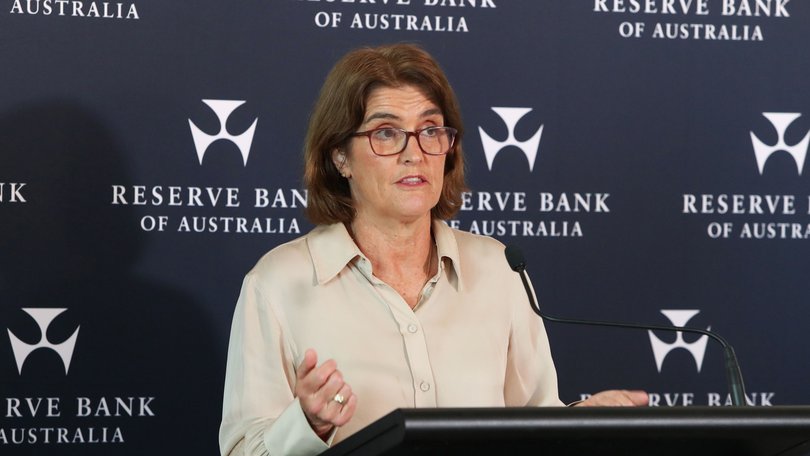Reserve Bank of Australia keeps cash rate on hold at 4.35pc in widely expected move

The slowing economy does not mean the war on inflation has been won, Reserve Bank of Australia governor Michele Bullock has warned, meaning it will need to tread carefully to ensure inflation returns to target within a reasonable timeframe.
Speaking on Tuesday after the RBA board elected to keep rates on hold at 4.35 per cent, and did not rule out the prospect of further rate hikes, Ms Bullock said there were still numerous risks facing the economy.
“We’re not confident enough to say we can rule out interest further interest rate changes,” she said. “But we do think that we are on the path to get ourselves back to inflation in target within our forecast period.
Sign up to The Nightly's newsletters.
Get the first look at the digital newspaper, curated daily stories and breaking headlines delivered to your inbox.
By continuing you agree to our Terms and Privacy Policy.“All we can do is tread carefully and ... be prepared to act if we see the risks moving in one direction or the other.”
The central bank has lifted rates from a rock bottom level of 0.1 per cent since May 2022 in a bid to push down inflation that peaked at a three-decade high. Inflation is now at 4.1 per cent, still above the RBA’s 2 to 3 per cent target.
The rate hikes to date have added $1210 per month to mortgage repayments for those with a $500,000 loan, $1815 per month on a $750,000 loan and $2420 on a $1 million loan, according to comparison site RateCity.
Some analysts have suggested talk of rate cuts ahead of them falling is likely to lead to a resurgence in property prices. Ms Bullock said the lack of supply remained the major driver of high housing prices, for renting and buying.
“I wouldn’t like to predict housing prices, frankly,” the governor said. “Every time we try to do that we seem to get it wrong. We were surprised when they started rising again, quite frankly, and I think everyone was.”
The RBA board, in its post-meeting statement, said it expected improving household real incomes, as inflation fell, would lift household wealth.
But it also remains concerned with productivity growth given rising labour costs, though noted wages growth appeared to have peaked.
“Nevertheless, this level of wages growth remains consistent with the inflation target only on the assumption that productivity growth increases to around its long-run average,” it said.
“Measured productivity growth has picked up in the past two quarters but whether this trend will be sustained is uncertain.”
Deloitte Access Economics partner Stephen Smith said the Federal Government could use May’s Budget to boost productivity.
“Productivity growth is key to the medium-term outlook,” he said.
“The upcoming budget is an opportunity for the Federal Government to build on the elimination of nuisance tariffs, which represent mere baby steps toward economic reform, and move further in relation to tax and competition policy to boost productivity growth.”
Economists had widely forecast the RBA’s move but say it appears its bias for further hikes has been lessened.
“The RBA (is) in no rush to start cutting rates,” AMP chief economist Shane Oliver said.
“The RBA appears to feel that with the economy still growing (only just) it can afford to wait for more evidence before cutting.
“Like other central banks, it wants to avoid the risk of cutting too early and then having to reverse course if inflation proves too high.”
In its post-meeting statement, the RBA board said the economic outlook remained highly uncertain and household consumption was “particularly weak” given high inflation and rising interest rates.
“The path of interest rates that will best ensure that inflation returns to target in a reasonable timeframe remains uncertain and the board is not ruling anything in or out,” it said in the statement.
“The board will continue to pay close attention to developments in the global economy, trends in domestic demand, and the outlook for inflation and the labour market.
“The board remains resolute in its determination to return inflation to target.”
